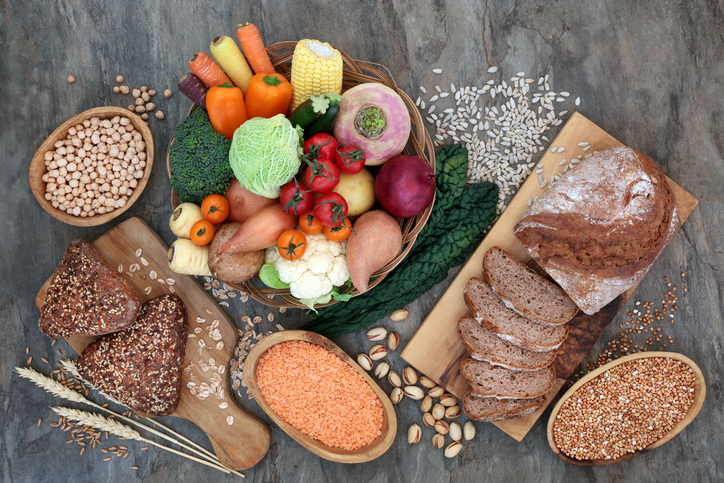Do Antinutrients Get a Bad Rap?

By Joy Stephenson-Laws, J.D., Founder
We are constantly learning new things about how foods and how the nutrients they contain may impact health. The more we discover, the more prepared we need to be to embrace new ideas, let go of old ones and modify our eating behaviors accordingly.
I am sure many of you remember iconic advertising campaigns such as “The incredible, edible egg” and “Pork, the other white meat,” which were launched to counter widespread concern about eating these products because of their supposed health risks. And to be fair, there was a time when science did encourage people to limit their egg consumption over their possible link to high cholesterol and did encourage eating white meat over red for similar reasons. We now know, of course, that eggs are quite healthy and that there is no significant difference between red and white meat when it comes to cholesterol.
The latest foods to find themselves portrayed as dietary “villains” are those that contain what are known as antinutrients. The word itself is almost enough to make any health-minded person run in the other direction avoid them at all costs. After all, by definition antinutrients are compounds found in plant and animal foods that inhibit our bodies’ ability to absorb these and other foods’ various nutrients. Who in their right mind would want to eat something that sabotages nutritional value and put our health at risk in the process?
Well, let me challenge you to try and find foods, especially fruits and vegetables, which are the basis of a healthy diet, that do not have some degree of antinutrients.
Current thinking is that as plants evolved, they developed antinutrients to help ensure their survival. Seeds in fruits, for example, often contain antinutrients which taste bitter. Certain animals deciding to enjoy a piece of fruit will most likely just eat the fleshy part and discard the seeds. The seeds then hit the ground, germinate and produce new fruit. If the seeds were sweet, they would be eaten and that plant line would eventually die out.

The point is that we constantly eat, and have been eating for our entire lives, foods that contain antinutrients. So, why have they gotten such a bad rap? One theory I have is that some fad diet books are based on the premise of “avoid this/eat that, and you will be thinner, happier, more energetic, healthier and live longer.” I would venture that because antinutrients have been having their well-known “15 minutes of fame.”
Antinutrients are not alone in falling out of nutritional favor. I found it very interesting – and enlightening – to learn that dietary fiber had the same problem back in the 19th century when scientists thought it was bad for people. Their thinking was that it caused our bodies to eliminate nutrients with stool. This belief was so widespread that fiber was actually removed from foods at one point. Of course, we now know that dietary fiber is important to good health.
Research has indeed shown, however, that antinutrients do, in fact, inhibit our bodies’ ability to absorb certain nutrients. They most commonly interfere with the absorption of key nutrients such as calcium, zinc, potassium, magnesium and iron. That said, many of the steps we take in food preparation either eliminate or greatly reduce the impact of antinutrients. You should also keep in mind that you would need to eat an incredibly large amount of antinutrients to really put your health at risk.
Science is also now discovering more and more that antinutrients actually have significant health benefits. Some examples are:
- Saponin, which is found in legumes, can interfere with overall nutrient absorption. But it also can boost the immune system, help protect against cancer, protect teeth against cavities and lower blood glucose levels.
- Teas and coffee have tannins, which can decrease iron absorption, are antioxidants which can inhibit the growth of bacteria and viruses as well as possibly reduce blood pressure and cholesterol.
- Lectins, common in grains and also legumes, can inhibit the absorption of calcium, iron, phosphorus and zinc. But they also can help with weight management, reduce the risk of diabetes and lower the risk of cardiovascular disease.
- Phytic acid, found in corn, wheat, rice and barley, can decrease the absorption of iron, zinc, magnesium and calcium. It also is an antioxidant that can reduce inflammation and boost immune function.
- One other is glucosinolate, found in vegetables such as cauliflower, can prevent the absorption of iodine but at the same time can inhibit tumor growth.
The first thing to keep in mind is that, according to the Harvard University T.H. Chan School of Public Health, while certain foods may contain residual amounts of antinutrients after processing and cooking, “the health benefits of eating these foods outweigh any potential negative nutritional effects.” In other words, just because the antinutrients in spinach mean your body will absorb about five percent of the available calcium in this plant (versus about 30 percent of the calcium in milk) does not mean you should not eat spinach, which offers a wealth of important nutrients. Another great example is zinc, which has far less bioavailability in grains or nuts than in meat. But you still should eat the grains and nuts! You don’t want to throw the proverbial baby out with the bathwater.
The solution I use to minimize the impact of any antinutrients and maximize the nutritional value of my meals is pretty simple. I first think about what I want and need to eat; second, I think about which foods I will combine and which I will eat alone; and third, I think about how I am going to prepare them. Here is how I do it:
- I really enjoy a variety of textures and flavors in my diet, which is primarily plant based. In addition to making meals more interesting, eating diverse foods is also the best way to ensure that you are giving your body the nutrients it needs. It’s important to not eat too much of any single food to ensure that antinutrients found in one are countered by not being present in others. This method also keeps your meals from getting boring. I like kale, eggplant, salmon and kiwi as much as anyone else, but I also don’t want to eat them for breakfast, lunch and dinner every single day.
- I also keep in mind that combining certain foods can reduce their overall nutrient value by making it harder for my body to absorb certain nutrients. Others may enhance absorption. A good example is iron. Research shows foods such as dairy products (which contain calcium), tea, coffee and soy products may make it harder for your body to absorb iron. Conversely, eating foods with a lot of vitamin C, such as citrus and vegetables, can greatly increase iron absorption. Additional foods that enhance iron absorption are those rich in beta-carotene, such as spinach and peaches, as well as honey and black-strap molasses.
- Preparation is also key to ensuring foods retain their nutrient value as well as making it easier for our bodies to absorb these nutrients. For example, research has shown that soaking, fermenting, malting, sprouting or boiling food before eating it can either deactivate or even remove antinutrients. You also want to be sure that you are not overcooking food, since doing so can make food harder to digest, reduce its nutritional value (if you overcook vegetables in water, for example, you end up pouring the nutrients down the drain) and even form carcinogenic substances if you decide to go for a “charred” look and taste.
If you are concerned that your body may not be getting all the nutrients it needs, and just as importantly in the right amounts, you should consider getting a nutrient test. Armed with the information from this test, you and your healthcare provider can make any adjustments to your diet, including supplements, that may be needed to help you stay at your nutritional best. You may also want to take steps to ensure your gut health to further help ensure that your body is getting the most nutritional value of the foods you eat.
Enjoy your healthy life!
Disclaimer: This article is not intended to provide medical advice. Please consult with your doctor or another competent healthcare practitioner to get specific medical advice for your situation.
The pH professional health care team includes recognized experts from a variety of health care and related disciplines, including physicians, attorneys, nutritionists, nurses and certified fitness instructors. This team also includes the members of the pH Medical Advisory Board, which constantly monitors all pH programs, products and services. To learn more about the pH Medical Advisory Board, click here.







